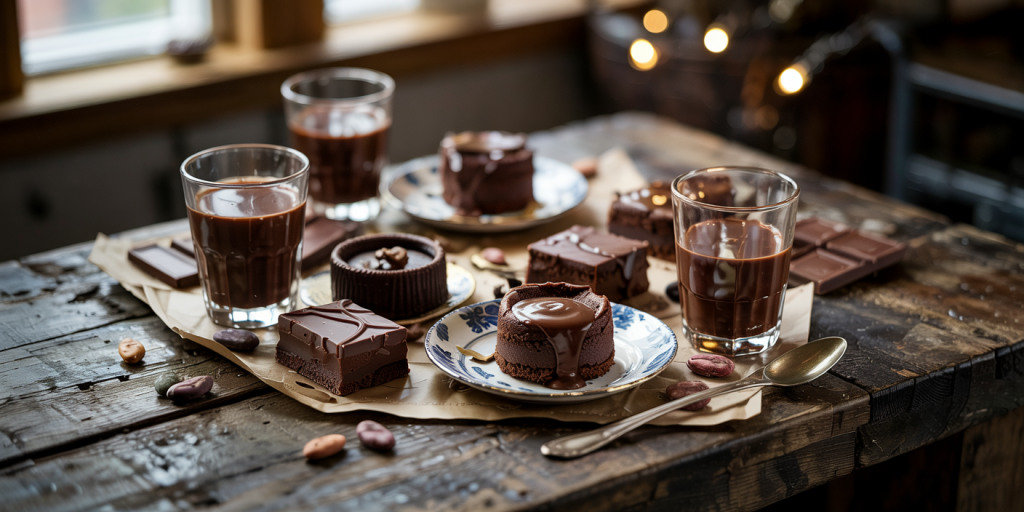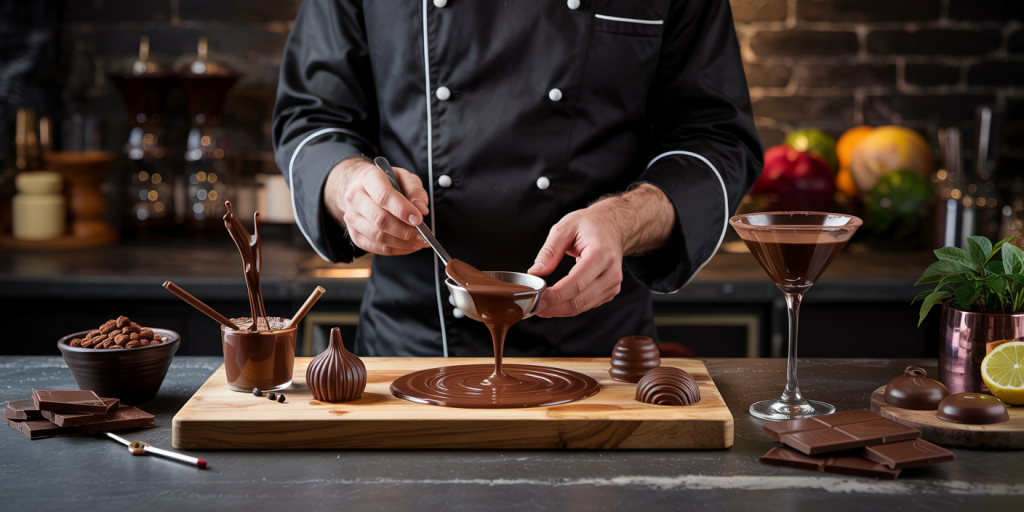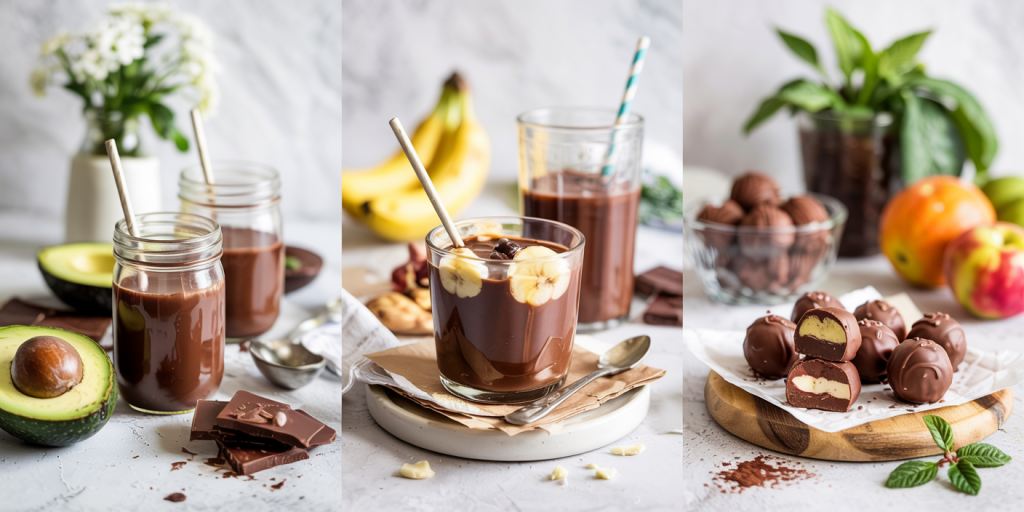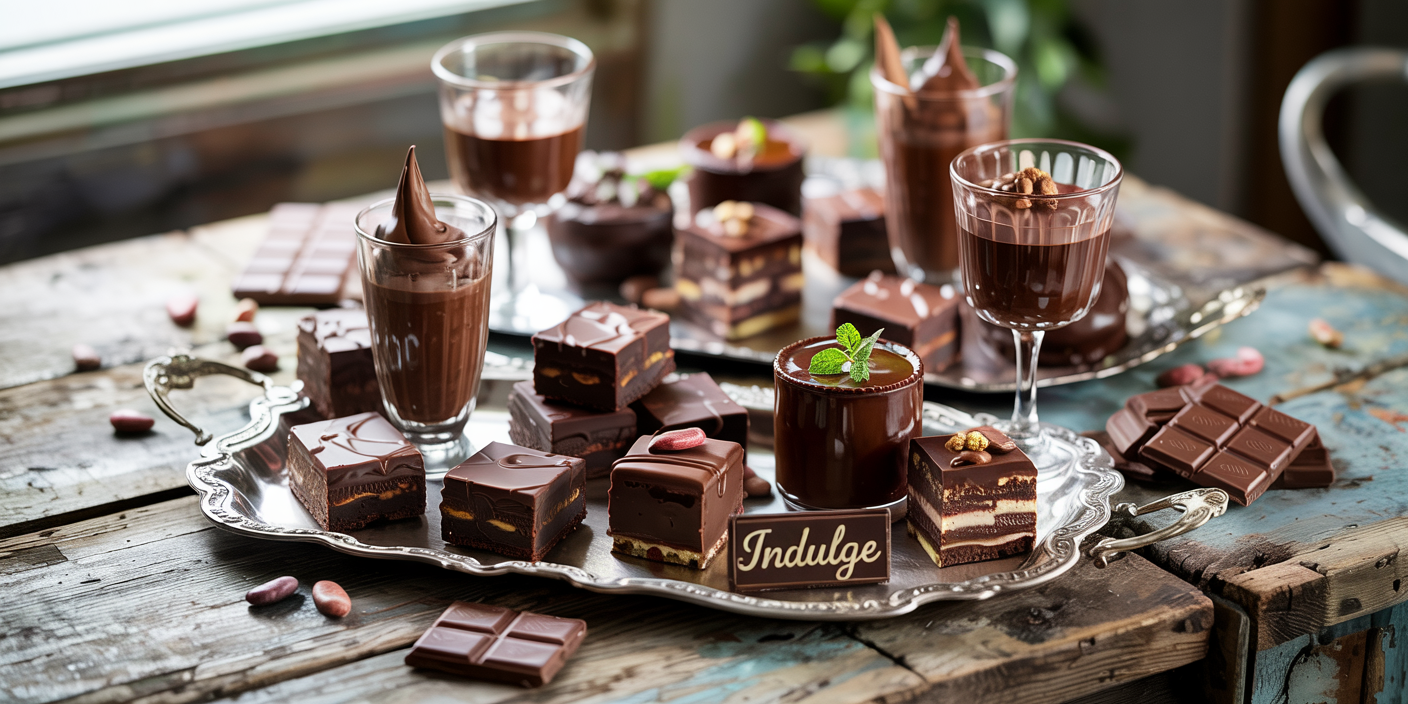Chocolate, cherished by millions around the world, is more than just a sweet treat—it’s an experience. From silky smooth ganaches to rich, fudgy brownies, chocolate has long captured the imagination and palates of dessert enthusiasts. According to the International Cocoa Organization, global chocolate consumption exceeds 7 million metric tons annually, underscoring its enduring popularity. For chocolate lovers, discovering new recipes that celebrate this beloved ingredient is a journey filled with flavor, creativity, and joy. This article delves into a variety of chocolate lover’s recipes, offering options for every skill level, occasion, and taste preference.

The Allure of Chocolate in Culinary Arts
Chocolate’s versatility in cooking and baking is unmatched. Its flavor profile ranges from bitter to sweet, and it complements an array of ingredients—nuts, fruits, spices, and even savory elements like chili or sea salt. Many chefs and home cooks alike prize chocolate for its ability to elevate both simple dishes and gourmet desserts.
Nutritionally, chocolate, especially dark chocolate, contains antioxidants known as flavonoids which have been linked to health benefits such as improved heart health and reduced inflammation, as noted in a 2018 study published in *Frontiers in Nutrition*. This intersection of health and indulgence adds an additional layer to chocolate’s global appeal.
Classic Chocolate Recipes to Savor
For those just beginning their chocolate cooking journey or anyone seeking the comfort of timeless recipes, starting with classics is ideal. The chocolate brownie, for example, has roots tracing back to the late 19th century in the United States and remains a bestseller worldwide. A traditional fudge brownie recipe typically includes cocoa powder or melted chocolate, butter, sugar, eggs, and flour. Baking it correctly ensures a moist, dense texture that chocolate fans crave.
Another quintessential treat is chocolate mousse—a French delicacy renowned for its airy, creamy texture. Real cases such as the famous Parisian cafes reveal that mousse’s success hinges on the quality of chocolate and the expert folding of whipped egg whites or cream to retain volume. The mousse must set under refrigeration to allow flavors to meld and the texture to firm up, providing a luxurious mouthfeel.
Innovative Chocolate Recipes for Adventurous Palates
Modern culinary trends have expanded how chocolate is incorporated into recipes, pushing creative boundaries. One such example is the use of chocolate in savory dishes, such as Mexican mole sauce—a complex blend often utilizing dark chocolate to balance spicy and smoky flavors. This exemplifies chocolate’s capacity to enhance classical cuisine, offering a deep, rounded taste.
For dessert enthusiasts seeking innovation, chocolate lava cake has revolutionized indulgence. It features a molten chocolate center that flows upon cutting, combining a crispy exterior with gooey richness inside. The recipe calls for precise baking times and temperatures to ensure the center remains molten, a technique highlighted by esteemed bakers like Dominique Ansel.
Additionally, chocolate-infused cocktails have become trendy, combining bittersweet chocolate liqueurs with various spirits to craft decadent drinks like the Chocolate Martini or Mexican Hot Chocolate Cocktails. Such recipes showcase chocolate’s versatility beyond the kitchen, enhancing social experiences where taste and innovation meet.

Comparative Table: Dark Chocolate vs. Milk Chocolate in Recipes
| Feature | Dark Chocolate | Milk Chocolate |
|---|---|---|
| Cocoa Content | Typically 50%-90% cocoa solids | Usually 10%-50% cocoa solids |
| Flavor Profile | Rich, bitter, less sweet | Creamy, sweeter, less intense |
| Ideal Uses | Baking, desserts requiring strong chocolate flavor, health recipes | Eating, lighter desserts, confections |
| Nutritional Benefits | Higher in antioxidants and lower sugar | Higher in sugar and fat content |
| Melting Point | Higher melting point; requires precise handling | Lower melting point, easier to melt |
By understanding these differences, home cooks can select the best type of chocolate for their recipes—dark chocolate often preferred for intense desserts and health-conscious cooking, milk chocolate favored for lighter, creamier delights.
Tips for Selecting and Using Chocolate in Recipes
Choosing the right chocolate involves more than just flavor preference. Factors such as form (bars, chips, cocoa powder), percentage of cocoa, and presence of additives or preservatives can affect both the cooking process and final taste. High-quality couverture chocolate, for example, contains a higher percentage of cocoa butter, which helps achieve glossy finishes and smooth textures—important in professional baking and chocolate art.
When melting chocolate, avoiding overheating is critical to prevent seizing or a grainy texture. Using double boilers or microwave methods with short bursts and stirring regularly is advised. Furthermore, tempering chocolate is an advanced technique where chocolate is carefully cooled and reheated to stabilize the crystals, resulting in shiny, firm chocolate suitable for coatings or decorations.
Real case examples from renowned pastry chefs illustrate that proper chocolate handling enhances recipe success and elevates presentation. Aspiring chocolatiers often recommend practicing on varied recipes to improve skills continuously.
Healthier Chocolate Recipes to Enjoy Guilt-Free
While chocolate is often associated with indulgence, healthier alternatives allow chocolate lovers to enjoy treats without compromising nutrition. Recipes using dark chocolate with 70% or higher cacao content reduce added sugars and maximize antioxidant intake. For instance, a recipe for avocado chocolate pudding replaces cream with nutrient-dense avocado, providing healthy fats alongside rich chocolate flavor.
Another trending recipe is protein-packed chocolate smoothies combining cocoa powder, plant-based milk, bananas, and protein powders. These smoothies offer a convenient way to enjoy chocolate while supporting fitness and wellness goals. Research from *Nutrients* journal highlights that combining cocoa and fruits may boost antioxidant effects synergistically.

Additionally, raw vegan chocolate truffles made from cacao, nuts, and natural sweeteners cater to dietary restrictions while delivering indulgence. The growing popularity of such healthy recipes reflects consumer demand for balanced lifestyles that do not sacrifice pleasure.
The Future of Chocolate Recipes: Trends and Innovations
Looking ahead, chocolate recipes are poised to benefit from ongoing innovations in food technology and evolving consumer tastes. Sustainability initiatives are pushing more recipes to incorporate ethically sourced cacao, with fair-trade and organic certifications becoming more prominent. Consumers increasingly value transparency and ecological responsibility when choosing chocolate products, influencing recipe development in both home kitchens and commercial settings.
Technological advancements in alternative chocolates, such as ruby chocolate—known for its natural pink hue and fruity flavor—add new dimensions to recipe creativity. This expands the palette for chocolate lovers, inspiring novel dishes and desserts.
Furthermore, plant-based and allergen-free recipes that use chocolate substitutes like carob or cocoa blends cater to growing dietary restrictions worldwide. Such inclusivity ensures that the magic of chocolate can be experienced by anyone, regardless of dietary needs.
Innovative techniques such as molecular gastronomy also allow chefs to experiment with chocolate textures, manipulations, and pairings that defy tradition. These advances are reflected in popular food festivals and competitions, where new chocolate recipes gain acclaim and inspire broader culinary trends.
—
In summary, chocolate lovers have an expansive array of recipes to explore, from classic brownies and mousse to avant-garde lava cakes and savory mole sauces. The diversity in chocolate types, preparation methods, and flavor combinations makes it a perennial favorite in kitchens worldwide. Whether prioritizing tradition, innovation, or health, chocolate offers endless possibilities for culinary artistry. As new trends emerge, blending sustainability, technology, and inclusivity, chocolate’s role in recipes will continue to evolve, delighting and inspiring generations of chocolate enthusiasts to come.

Deixe um comentário